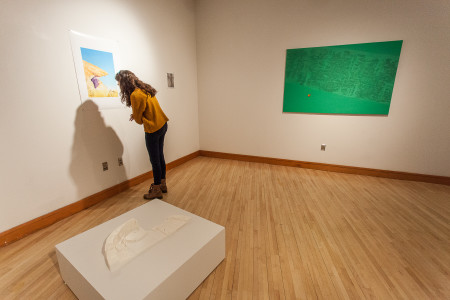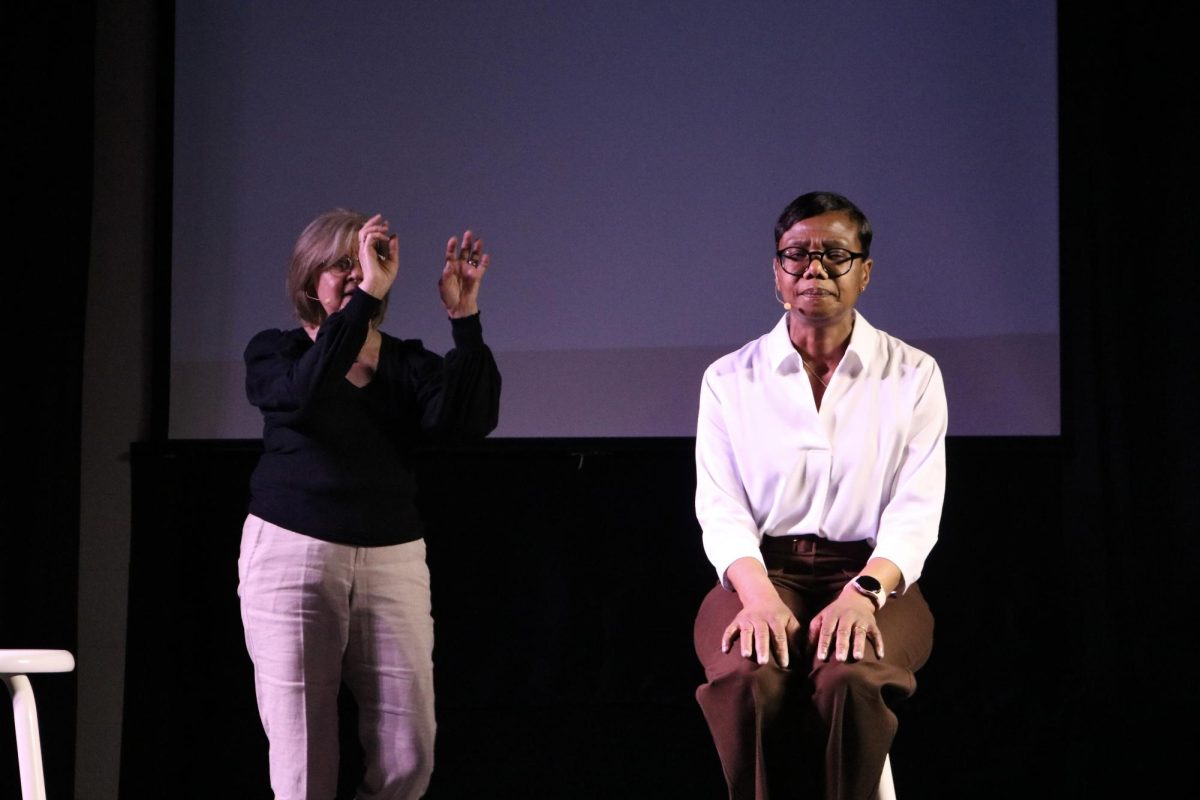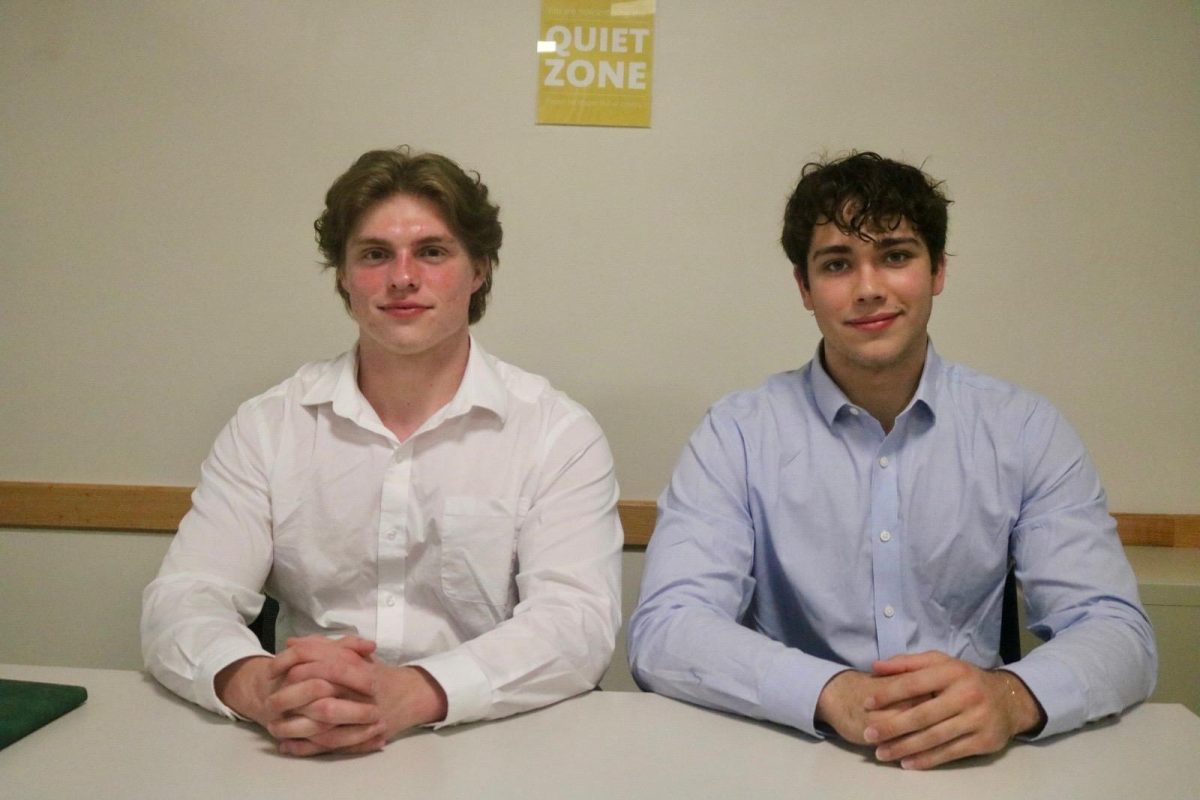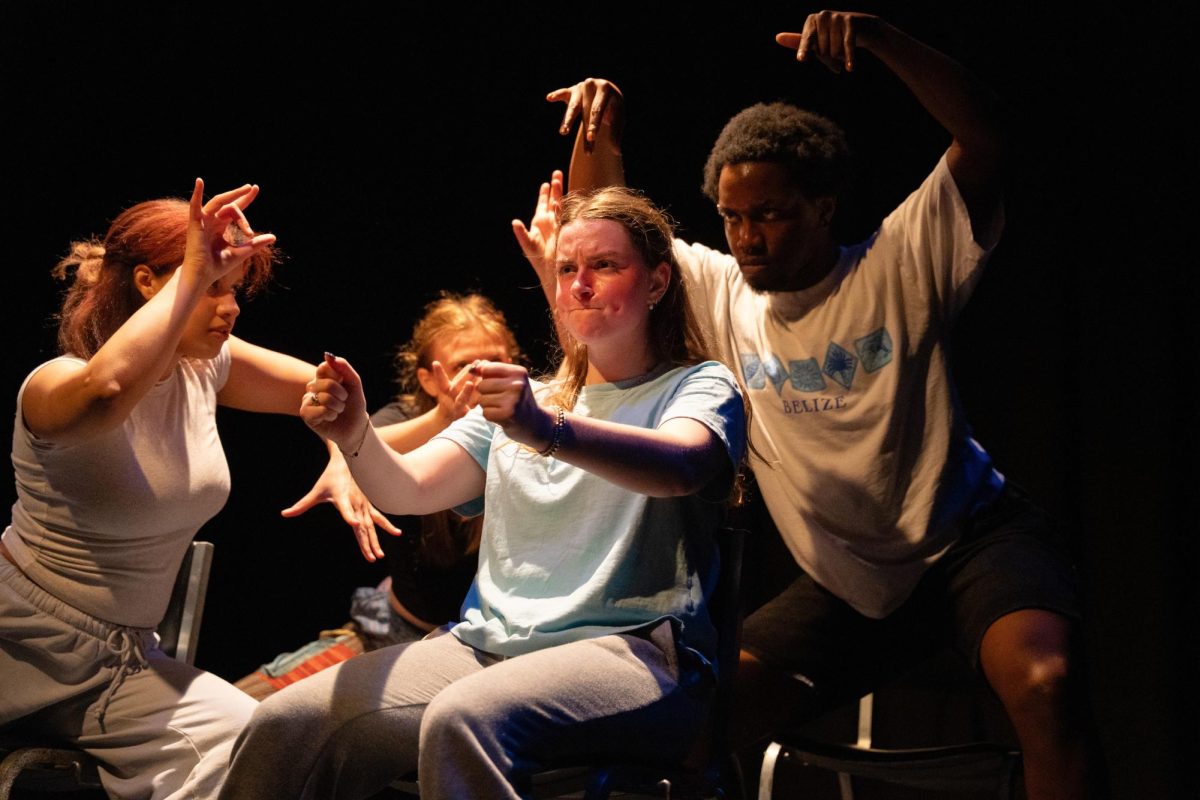Elle Duncombe-Mills
duncombe1@grinnell.edu

Jack Dunnington ’16 looks to the past to critique the present in his new Smith Gallery show, “Uchronia.” Filling the gallery space with large painted canvases, mixed media pieces and a sculpture, Dunnington offers possible alternatives to the histories we take for granted.
“I think investigating alternate histories is a useful tool for interrogating the way that history did pan out and questioning where we are as a society,” Dunnington said.
The very word “Uchronia” describes an alternate timeline, and he sees the show as just that: the visual representation of a dramatically altered present, which could have been caused by any past moment in time occurring differently.
“There is a lot to be learned from asking, ‘What if things had gone differently?’” Dunnington said. When discussing his sculpture piece, Dunnington explained the process behind rethinking the form of an ancient Pueblo.
“I’ve taken [the Puebloan] architecture and reconstructed it, and then expanded it in complexity and size to ask, ‘What if this society hadn’t suffered agricultural collapse or what if the conquest had gone differently?’” Dunnington said.
He explained that this particular historical moment intrigues him because of how it is perceived in present times. People are biased in thinking that the failure of Puebloan society and the Europeans’ subsequent takeover was inevitable—when in reality, it was only random accident that paved this course.
“Hopefully [the sculpture] creates a visual that lets people key into questioning these assumptions that we have about our own society and Western society specifically,” Dunnington said.
While sculpture is a departure from Dunnington’s usual two-dimensional work, “Uchronia” as a whole certainly builds upon his past expertise.
“The process is definitely rooted in anthropological study,” Dunnington said, adding that he is even writing his anthropology thesis on the Puebloan society referenced in “Uchronia.”
He also explained that the show is part of a greater evolution of work, which aims to advance critical thought and reinterpret subjects perceived to be concrete.
Dunnington admits another way “Uchronia” relates to past work is through its use of animal and sci-fi imagery.
“In the past I’ve related alternate histories to science fiction as a genre because that frequently embodies these kind of juxtapositions of past and present that I am interested in,” Dunnington said.
While these otherworldly themes are certainly present in “Uchronia,” Dunnington purposefully limited their scope. He sees the show as a critique of human society and thought and did not want to marginalize the human experience with his work. For Dunnington, creating a show that translates specific ideas to an audience is imperative.
“I really want to investigate and communicate a topic visually,” Dunnington said about himself as an artist.
He feels that his methodical art-making process has pros and cons, but ultimately hopes his work is able to introduce viewers to an issue while still leaving enough room for alternate understandings.
With “Uchronia,” Dunnington certainly strikes this desired balance. Literal interpretations of an altered history, as with the Pueblo sculpture, are juxtaposed with more abstract ones, giving viewers enough direction to understand the topic of critique while still having the ability to bring their own interpretations to the work.

















































